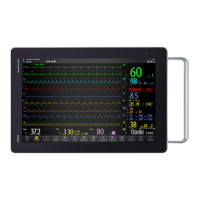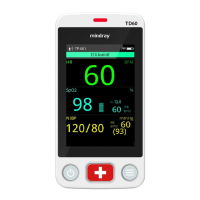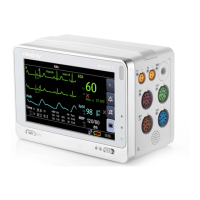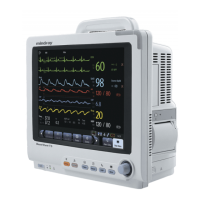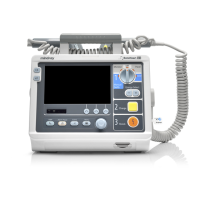BeneVision N Series Patient Monitor Operator’s Manual 29 - 1
29 Monitoring Neuromuscular Transmission (NMT)
29.1 NMT Introduction
The neuromuscular transmission (NMT) module evaluates muscle relaxation of patients under neuromuscular
block by measuring the strength of muscle reaction after electrically stimulating the dedicated motor nerve.
Two electrodes are placed on the patient’s skin over dedicated nerve. A controllable current source delivers
stimulation pulses to the two electrodes, and the acceleration of muscle contractions is measured with a 3-axis
accelerometer.
NMT monitoring is intended for adult and pediatric patients.
29.2 NMT Safety Information
• The NMT measurement is not intended for neonatal patients.
• The NMT stimulation should not be applied directly on the eyes, covering the mouth, on the front of
the neck, especially the carotid sinus, or from electrodes placed on the chest and the upper back or
cross over the heart.
• Application of electrodes near the thorax may increase the risk of cardiac fibrillation.
• Never apply electrodes to patients in areas where inflammation or injury is evident.
• When you are connecting the electrodes or the patient cable, make sure that the connectors do not
touch any electrically conductive material including earth.
• Patients with nerve damage or other neuromuscular problems may not respond properly to
stimulation. The NMT measurement may show unusual patterns when monitoring muscle paralysis
in these patients.
• NMT stimulation current pulses may interfere with other sensitive equipment, for example,
implanted cardiac pacemakers. Do not use the NMT measurement on patients with implanted
electronic devices unless so directed by a medical specialist.
• Simultaneous use of the NMT with high frequency electrosurgical equipment (ESU) may result in
burns at the stimulation site and can also adversely affect measurement accuracy. Make sure the
ESU return electrode is properly applied to the patient.
• Do not use the NMT in close proximity to shortwave or microtherapy devices, there is a risk of
adversely affecting the NMT measurement.
(1) Calibration hard key (2) Start/stop key
(3) Module status indicator (4) NMT patient cable connector

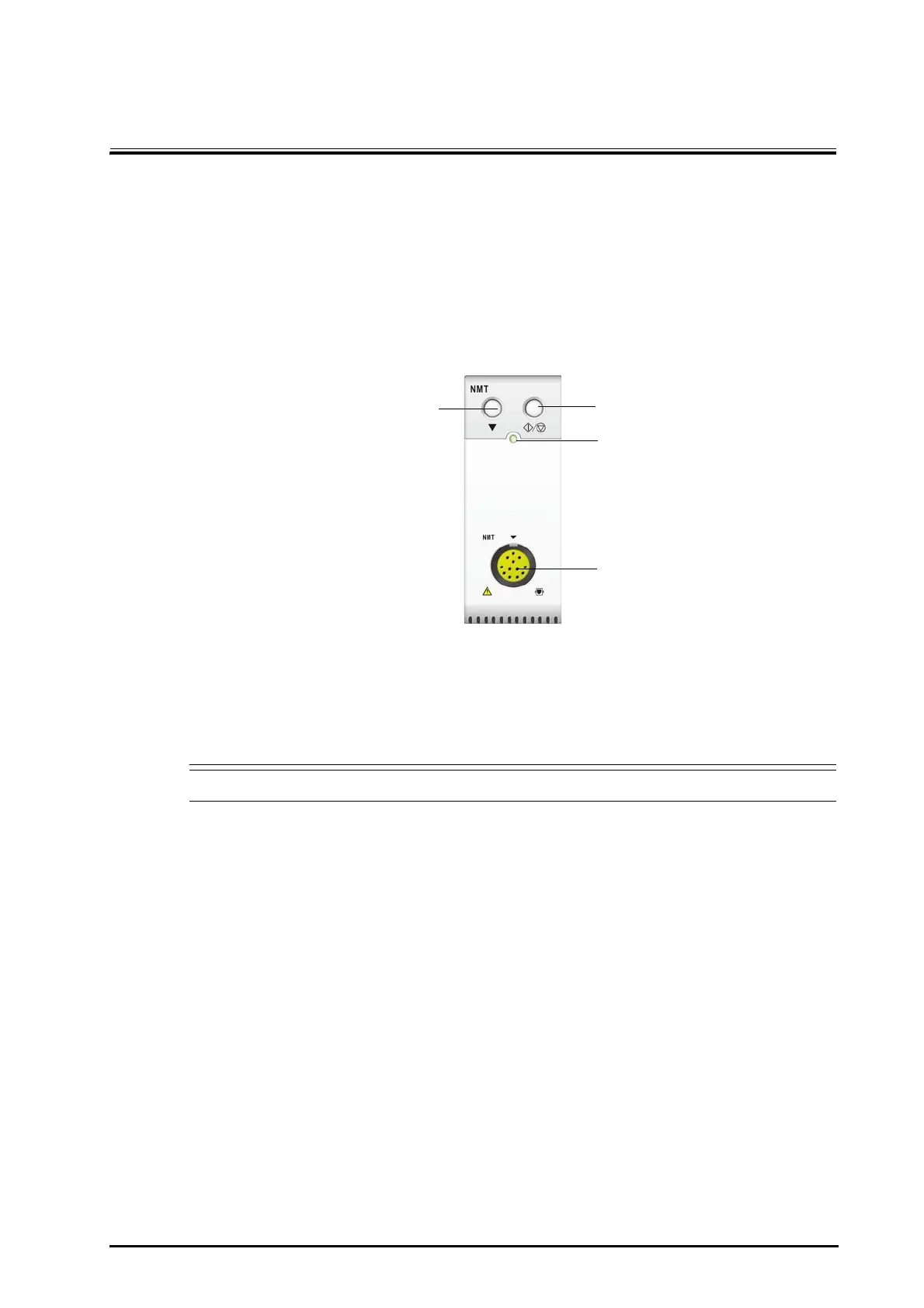